#Rio Tinto Kennecott Smelter
Photo
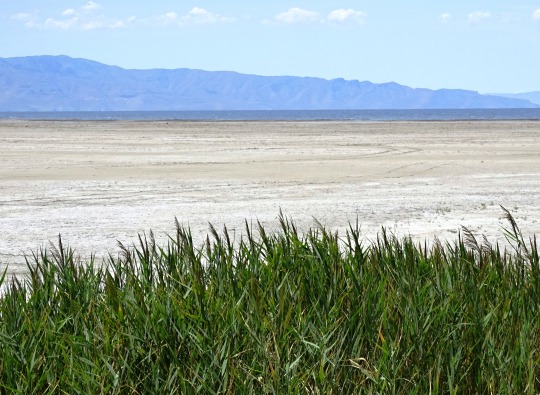

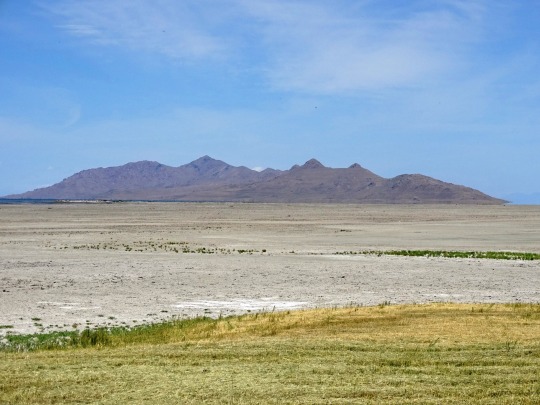
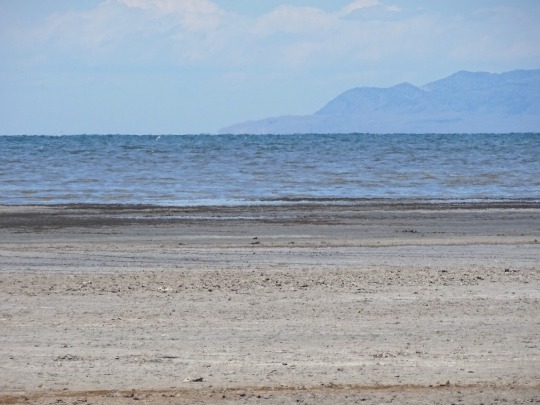
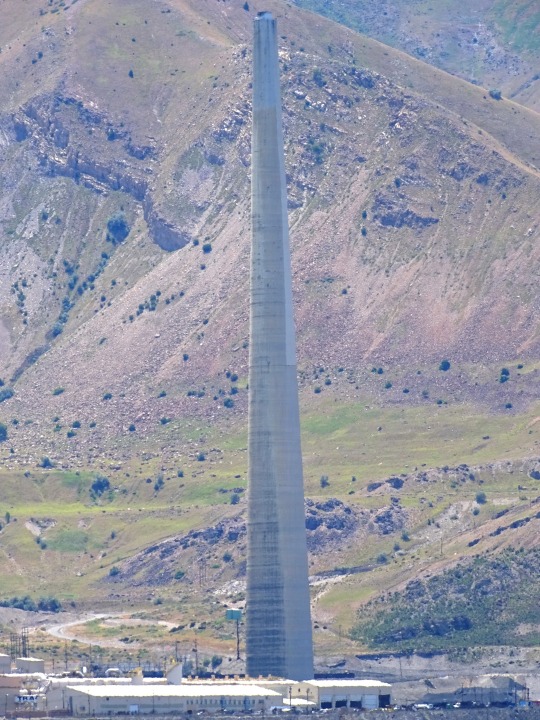
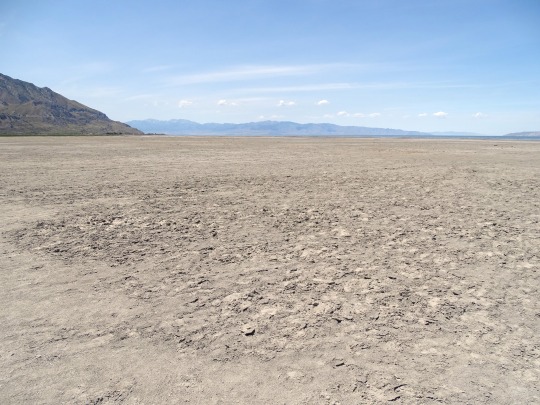


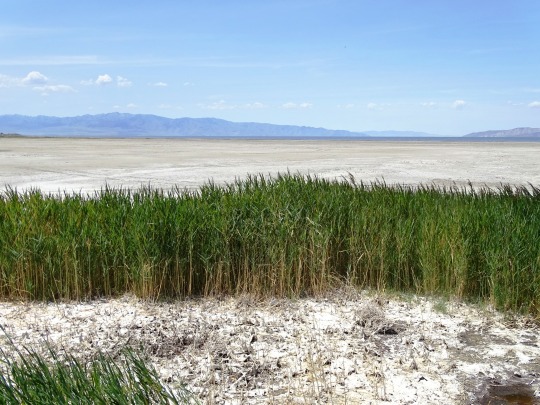

Great Salt Lake State Park, UT (No. 3)
The high salinity in parts of the lake makes them uninhabitable for all but a few species, including brine shrimp, brine flies, and several forms of algae. The brine flies have an estimated population of over one hundred billion and serve as the main source of food for many of the birds which migrate to the lake. However, the fresh- and salt-water wetlands along the eastern and northern edges of the Great Salt Lake provide critical habitat for millions of migratory shorebirds and waterfowl in western North America. These marshes account for approximately 75% of the wetlands in Utah. Some of the birds that depend on these marshes include: Wilson's phalarope, red-necked phalarope, American avocet, black-necked stilt, marbled godwit, snowy plover, western sandpiper, long-billed dowitcher, tundra swan, American white pelican, white-faced ibis, California gull, eared grebe, peregrine falcon, bald eagle, plus large populations of various ducks and geese.
There are twenty-seven private duck clubs, seven state waterfowl management areas, and a large federal bird refuge on the Great Salt Lake's shores. Wetland/wildlife management areas include the Bear River Migratory Bird Refuge; Gillmor Sanctuary; Great Salt Lake Shorelands Preserve; Salt Creek, Public Shooting Grounds, Harold Crane, Locomotive Springs, Ogden Bay, Timpie Springs, and Farmington Bay Waterfowl Management Areas.
Several islands in the lake provide critical nesting areas for various birds. Access to Hat, Gunnison, and Cub islands is strictly limited by the State of Utah in an effort to protect nesting colonies of American white pelican (Pelecanus erythrorhynchos) The islands within the Great Salt Lake also provide habitat for lizard and mammalian wildlife and a variety of plant species. Some species may have been extirpated from the islands. For example, a number of explorers who visited the area in the mid-1800s (e.g. Emmanuel Domenech, Howard Stansbury, Jules Rémy) noted an abundance of yellow-flowered "onions" on several of the islands, which they identified as Calochortus luteus. This species today occurs only in California, however, at that time the name C. luteus was applied to plants that later were named C. nuttallii A yellow-flowered Calochortus was first named as a variety of C. nuttallii but was later separated into a new species C. aureus. This species occurs in Utah today, though apparently no longer on the islands of the Great Salt Lake.
Because of the Great Salt Lake's high salinity, it has few fish, but they do occur in Bear River Bay and Farmington Bay when spring runoff brings fresh water into the lake. A few aquatic animals live in the lake's main basin, including centimeter-long brine shrimp (Artemia franciscana). Their tiny, hard-walled eggs or cysts (diameter about 200 micrometers)are harvested in quantity during the fall and early winter. They are fed to prawns in Asia, sold as novelty "Sea-Monkeys," sold either live or dehydrated in pet stores as a fish food, and used in testing of toxins, drugs, and other chemicals.There are also two species of brine fly as well as protozoa, rotifers, bacteria and algae.
Salinity differences between the sections of the lake separated by the railroad causeway result in significantly different biota. A phytoplankton community dominated by green algae or cyanobacteria (blue-green algae) tint the water south of the causeway a greenish color. North of the causeway, the lake is dominated by Dunaliella salina, a species of algae which releases beta-carotene, and the bacteria-like haloarchaea, which together give the water an unusual reddish or purplish color, and the bacteria converts non-toxic mercury into toxic methyl mercury, which then flows into the Southern portion of the lake in a heavy brine layer through the causeway.
Although brine shrimp can be found in the arm of the lake north of the causeway, studies conducted by the Utah Division of Wildlife Resources indicate that these are likely transient. Populations of brine shrimp are mostly restricted to the lake's south arm.
In the two bays that receive most of the lake's fresh water inflows, Bear River Bay and Farmington Bay, the diversity of organisms is much higher. Salinities in these bays can approach that of fresh water when the spring snow melt occurs, and this allows a variety of bacteria, algae and invertebrates to proliferate in the nutrient-rich water. The abundance of invertebrates such as gnat larvae (chironomids) and back swimmers (Trichocorixa) are fed upon extensively by the huge shorebird and waterfowl populations that utilize the lake. Fish in these bays are fed upon by diving terns and pelicans.
Source: Wikipedia
#Great Salt Lake State Park#Great Salt Lake State#travel#vacation#USA#Western USA#Utah#summer 2019#road trip#Lincoln Highway#salt crust#water#landmark#tourist attraction#landscape#countryside#mountains#Kennecott Garfield Smelter Stack#Rio Tinto Kennecott Smelter#engineering#chimney#architecture#Antelope Island#grass#stone#sand#original photography
1 note
·
View note
Text
Episode 5 Transcript: (EMERGENCY MANAGER) Playing To Your Strengths with Mary Beth Nelson
Rachael Barksdale: Welcome to the Career Bites podcast where we make career exploration easy - and fun! My guest this week is Mary Beth Nelson, a health and safety advisor for one of the largest mining companies in the world, and a former hospital emergency manager. She’s one tough cookie. Although I’d heard parts of Mary Beth’s story before, I loved hearing it told in full, especially how she chose her undergraduate degree in Emergency and Crisis Management - so let’s just get right to it. Here’s my conversation with Mary Beth.
Honestly, until I met you, I didn’t even know that that was something you could major in. Why did you pick that? Before I even get into what that entails, what inspired you or led you to choose that as a career?
Mary Beth Nelson: It - It’s kind of a funny story, right, but it’s not like - it’s not like I woke up one morning and was like “I had an epiphany” or anything like that, and wasn’t like a life-long passion of mine. I’d moved back in with my parents, I was going to a community college. This is after I had been to...I’d already done some classes one place, and moved and done some schooling at another place and I just couldn’t decide what I wanted to do. Because I looked at it going “okay, well I want to have a career but I also don’t know what I would be happy doing for the next 25, 30 years.” Right? Because that’s like a long time commitment! The funny thing is, is my mom actually mentioned to me, she’s like “well, you know, think about, like, what are your strengths, what are you good at, what are you, like, not just passionate about but, like, what would play to your strengths?” And then, she’d mention, you know, like “some of the things I see in you…” and so - context is, is I was 20...20, 21 at the time, already had changed my major like three times, was going to community college just to finish my associates, trying to figure out - before I spent any more money on college - what I want to do. And she’s like “you know, you’re really good under pressure. Like, if you’re in a pressure, stressful situation you’re able to keep your head, and think clearly, and make decisive actions.” And she’s like “you know, I read about emergency management” and - like, in the Wall Street Journal, or something like that, right? Like, you know, “and how every state has emergency managers, and how - you know, FEMA” and all these things. And so I was like “hm, okay cool. Like, I’ll do some research and see what it’s about and see what I could do as a career with it” and all of this stuff. And so in researching it, I actually - it sounded really, really intriguing to me and I figured - so I found a school. I went to the American Military University, it’s an online program. I was never in the military, I was the only civilian in any of my classes, but I figured “hey, you know what? I’ve already changed my degree so many times, I’ve already gone to multiple schools, let’s just give it a try. I’ll take - I’ll do it for a year, see if I like it, and if I don’t then I’ll just change again, like, whatever.” And I started taking my classes, and I found them absolutely fascinating, and realized that it does play to my strengths. It does - it’s - it’s things that are interesting that I like. And so that’s kind of, like, the journey of how I got into, and ended up majoring for my bachelors, in emergency management.
Rachael: That’s really neat that you focused on playing to your strengths rather than what you’re passionate about because it ended up being something that you did find interesting, even though maybe initially you had no idea that you’d find it interesting. And so you currently work as a health and safety advisor for Rio Tinto Kennecott, which is a mining company for those of you who don’t know. What in the world does a health and safety advisor do? Mining clearly is a dangerous profession, but what specifically would you do, say, if you were to have one of our listeners job-shadow you for a day?
Mary Beth: A big portion of what I do is - is kind of risk management. Risk mitigation, risk reduction, those terms might resonate with people, they would understand what that means. I’ll use an example. So I work, currently, at our smelter and, you know, we have some dangerous processes that are well in control and we have the correct controls and equipment and stuff in place to keep people safe. But, you know, I - I would go out with a supervisor and verify that, you know, these tools and equipment and controls we have in place to keep individuals safe are working, the individuals are following them, they understand them. So that’s a portion of my day, is just going out in the field and interacting with the people doing the work, making sure they’re doing it safely, providing insight or assistance if they don’t know something, have a question. And then, you know, another part of my day is - I wouldn’t say putting out fires but just, people reaching out to me and saying “hey, uhh we had this question about this standard” or you know, “this - this incident just occurred. We - this equipment just got damaged. Uh...you know, what do we do about this?” Or “how do we help make sure - prevent it from happening again?” And so some of my - what I do is - is that. The prevention of - of incidents, of injuries. Investigation if there is an injury. And it could just be a really minor injury, someone cuts their finger. Well, we still want to know about it, we want to make sure that they’re okay, that we don’t cut other people’s fingers. I think a lot of times when people hear “mining”, or they hear “smelter”, they think that “oh, if you get injured you get your arm ripped off” or something. And yes, mining is - is a dangerous industry because we work with big equipment, we have molten metal, there’s toxic gases in the - that are produced from the processes. But my job is to help empower leaders, educate leaders, and work with the workforce to make sure that those things stay in control so they don’t get hurt. That would be kind of like - so if someone was following me, they would see that happening, they would see those interactions taking place. Some of it is also incident management, which is more, like, the computer side of stuff, right. Okay, chasing down leads, figuring - making sure that the correct data is put in the system, analyzing injury data or trends. Again, the whole goal is the prevention side of it, to prevent things from occurring.
Rachael: And before you worked for Rio Tinto, you were working for a hospital out in North Carolina. Do you feel like having maybe, like, a science background is helpful? Do you need to rely on a lot of STEM knowledge or STEM experts to do your job?
Mary Beth: For what I currently do, because I work in the mining industry, yes, having a good foundation of chemistry, and understanding processes, is very beneficial. But when it comes to - when I worked in healthcare, that is less...it - it’s more the soft sciences, right? So, understanding the psychology of disaster, understanding more of, like, logistics, and - and coordination, and a lot more interpersonal people skills. I mean, you have to have that in what I currently do as well, but...A key thing about most of the functions I’ve ever been in, or jobs I’ve ever been in, is that I’ve always had to be an influencer. The roles I - I am in are not - like, I can’t dictate to other people. Perfect example is, I worked in healthcare, like you mentioned, so I worked for Cone Health which is based in Greensboro, North Carolina, and then prior to that I worked for a few years at Primary Children’s Hospital, part of the Intermountain Healthcare network in Utah. So, a couple years, about five years total, in healthcare emergency management specifically. And, you know, you’re working with surgeons and doctors and people who are experts at what they do, and they’re very, very smart and educated and well-trained. And so I would then be coming in and instead of trying to say, like, “oh, well, you have to do this because I said so”, we’d have to influence and work with the why: “Well, we’re doing this because we need to protect the patients” or “we’re doing this because we don’t want our hospital to shut down” or “if there was a natural disaster, you know, people look to healthcare as, like, the beacon of - of stability”. And so - yes, for - if you’re - if you’re looking at going into, like, the occupational, health and safety side of things, having more of that STEM background would be very beneficial. But, again, not required. And then if you’re looking at emergency management, if that sounds intriguing to you, it is a lot more about, like I said, those soft sciences, the interpersonal skills, the - the person, and less about the - the science. If that makes any sense.
Rachael: Yeah, for sure. It’s interesting that depending on what industry you’re working in you’re probably more of an influencer than an enforcer. And especially working with, you know, people who have all of these degrees upon degrees, I’m sure that they don’t take too kindly to people telling them what to do.
Mary Beth: Oh yeah, no, mm-hm, I definitely got talked - talked down to by a trauma surgeon one time in a meeting where I was like, “okay, I’m sorry, I’ll back out of the room”.
Rachael: There’s a lot going on with your job, just logistics and keeping people safe. And not that you experience emergencies all the time, so - fortunately, or hopefully right, if you’re doing your job you shouldn’t be experiencing too many incidences at work but - so what, then, would you say is the most rewarding part of your job if you’re not constantly fighting off disasters everyday?
Mary Beth: I’ll openly admit that working in healthcare emergency management was a lot more rewarding than what I currently do. I mean, it’s not that I don’t like my job, it’s not that I have any issues with it, it’s just - it’s less of - the rewarding side of it. And sometimes you have jobs like that, right? And that’s okay. I’m perfectly content with that. But I will say, speaking from the emergency manager side of things, and especially in healthcare - you know, if - if a listener is thinking like, “oh, well I really want to go into healthcare but I don’t want to be a nurse, and I don’t want to go to like 20 years of schooling to be a doctor”. You know one that was really powerful to me was I always kept in mind that you’re doing this to keep the patients and the broader community safe. If you think about it, a hospital is self-contained. And if you have people who just came out of surgery, or who are getting cancer treatment, you know, or in the emergency room because they’re delivering a baby, they are wholly reliant upon that hospital to take care of them, right, to keep them safe. Not just from the medical emergency they’re having but from anything. And so when you look at it like that, that these people don’t have an option what are they going to do if the hospital, you know - in North Carolina, a big thing was tornado warnings every so often in the summer - if you didn’t have your staff prepared, if you didn’t have the right plans in place, if you didn’t have the right equipment, and people weren’t ready, you then are putting not just the staff who work at the hospital at risk, but all those people who can do nothing for them - who can’t help themselves in the sense of “where are they going to go?” Okay, I just had, you know, major surgery and I’m laying in bed recovering, I’m not going to get up and run out the door if there’s a tornado and you don’t know what to do. So I found that really rewarding, is that there was a really easy connection to see how I was helping the people around me. And I know talking with a lot of people who work in emergency management on the public sector side - because there’s emergency managers for cities, for counties, for large cities, small cities, for schools - like university-size schools, right - school districts, there’s a lot more than you would think, because it’s not just FEMA - they always say, you know it’s a similar thing, that they are working to protect their community. Because in an emergency - hurricane, tornado, earthquake, whatever that natural disaster is, or pandemic or whatever that might be - people will look to...to their leaders, to their community, for stability, for guidance. And if the community isn’t prepared, which is what emergency managers do, if it’s not prepared it’s obvious. There’s a lot more chaos, and usually loss of life, and property damage and all of these things, and so in the field of emergency management, whether it would be healthcare or public sector, generally what I’ve heard is that the most rewarding part is that you can directly see how your work impacts the people around you, usually - I mean, hopefully - for the better, right?
Rachael: Yeah! So there’s a lot of pressure involved with this job, lives are on the line, property’s on the line, whether the community knows it or not they’re looking to people like you to keep them safe, so what are maybe the top three attributes someone would need to have to be successful in such a high-pressure, high-stakes-type job?
Mary Beth: So, seeing a number of people come through this industry and fail miserably, it does make it evident of, like, there are certain personality traits that thrive. Regardless of how smart you are or how hardworking you are, like you said, when you work in a high-pressure high-stakes, so to speak, industry, it’s not for everybody, right? So I would say - I’m going to start with my third, so the - not the top one but the third one I would say is flexibility. You need to be able to, in a moment’s notice, change gears completely. Right? Because you could go from blue skies everything’s fine, I’m doing - okay I’m reviewing a procedure or I’m in the middle of a training, to all hell has broken loose and I need to gear up and start leading people and making decisive decisions. So you need to be able to have that flexibility. And then also the flexibility that any emergency is - is not stagnant. It’s ever-evolving, there’s always new information coming out or misinformation, or confusion. My number-two trait would be having the ability to juggle multiple plates at the same time, and being able to sustain that for weeks on end. It might be that, you know, there’s - there’s competing priorities, and it could - this doesn’t even have to be, like, disaster-response mode - this could be day-to-day mode because you have this entity that needs training, and this one that wants this equipment, and this one that needs help with this, and this project that’s taking forever. Because again, a lot of times in emergency management, and also in my current profession of health and safety, you’re a influencer. So a lot of times you’re waiting on other people to make the decision or to - to approve something, so having multiple things going at the same time, and not being able to set anything down, and I mean, again, it could go on for months like that. That’s a trait, that you need to be able to do that and be okay with that, because you - some people can do it for - “oh okay, I can - I can do that, that’s fine. I can multitask”. It’s not multitasking, it’s having simultaneous projects, simultaneous demands for weeks to months on end. And then my number-one trait would be - I guess you could consider it a personality trait - is you need to know your own limits. Because if you are self-aware enough to know when you have to tap out, or to know when “you know what, I’m about to scream at this person who is way above me, and who I don’t have the authorization to scream at, so I’m just going to step back”. Or, you know, “I’ve - I’ve hit my wall because I’ve been responding to this emergency for the last three days, I’ve hardly slept, I’m - I need to tap out or to get help”. And that is something that if you don’t have that ability, you will not last long in this field. And, you know, and not - and not that you couldn’t do emergency management without all three of them. Like, you could, it’s just those three traits make you the most successful emergency manager and less likely to burn out and leave after two years.
Rachael: Right! I imagine that there probably is a lot of turnover with new emergency managers because, yeah, it’s stressful. And those are things that you can learn but if you already have that innate ability I guess it makes it so much easier. So you had mentioned earlier that you got your bachelor’s degree online. You got an - your MBA degree from Western Governors University which is also an online - an online institution. Speaking about your education then, what are your thoughts on having gotten your degrees primarily online versus face to face? Do you feel like there were any benefits to that, or anything that you learned from going about your education in that method - which I think is becoming increasingly more common - but I think definitely not the majority in terms of how people get their higher education?
Mary Beth: Yeah, I do think I’m unique in the sense of I have both of my - like, I will say I did get my - through my associate’s degree all in person, those were all in-person classes. For me, personally, I learned that I’m a self-starter. I am able to dedicate the time, to have the discipline, to do online classes. And not everyone does, and that’s completely fine. I will also say that - and maybe some people feel this way too, is that - because I had done in-person classes for two, two-and-a-half years, I kind of learned I was done with, like, people. And I didn’t want to have to listen to their dumb questions or the stories, or professors ramble on about crap that I don’t care about. Just give me the information, let’s get down to business, and let’s get this over with. Right? Like I didn’t - I wasn’t going to school for the social aspect of it. That was not my purpose for going to college and trying to get a degree. So for me, it worked better to do online because I could cut out what I didn’t - didn’t feel was a priority to me, and just really get down to business. Again, that is not everybody’s take, right? Some people really need the social side of it and want that interaction and feed off the other people in their classes. And I would say go about it that way. One of the main reasons that I ended up going to American Military University, which is a solely online school, is because at the time - this was in 2009 - it had an emergency management program that had been in existence before 9/11. And that was rare to find. Because it was a military-based school they’d had emergency management for years - a little bit more heavily tinged towards like the combat, FEMA, government side of emergency management - but that was what drew me to that. So I would say to someone who’s looking at these schooling options and going “well what would work best for me?”, you have to look at “well what do you want to get out of it?” Are you solely in it just for the education? Then maybe online would work for you. If you feed off that energy of other people, then you should probably do it in person, but do your research of “how long has that program been in existence?” Because after 9/11 there were so many schools that - and then obviously Katrina, right, that added to it - and so a lot of schools, like, threw together programs. And so you’ve got to look and go “well, how long has this program been in existence? What’s its emphasis? What, you know, what’s its structure?” whether it’s online or in-person or maybe a combination. And then another practical purpose was that I put myself through school so I had to work. So if you’re someone who is paying for your own college, and you can’t get scholarships and you don’t have, you know, someone paying for it for you, online’s a good option because I could work a full-time job and then come home in the evenings and do my classwork. Even when I got my masters, right, I was working full-time. And so those online options were more appealing to me because I had to pay for them! And then I don’t have to pay for room-and-board and these other things that go on with moving to a campus and going to school on campus somewhere.
Rachael: You had mentioned before how you weren’t really sure what you were going to do, your mom brought up that idea of maybe emergency management, so what were some of those other careers that you were considering, I’m just kind of curious?
Mary Beth: Oh yes, so this is funny. You’ll - you’ll get a kick out of this. Okay, so, when I was initially applying to colleges I wanted to be a journalist. And so I actually got into Mizzou which has a really, really good journalism program. And then I was like, “well, I don’t know, maybe I don’t want to do that”, so I also applied to schools that had really good animal science programs, because I was like “well maybe I’ll be a vet or like a zoo keeper” or something like that. And I actually got into some good schools that had really great programs. And then I was like “oh wait, do I want to be like $120,000 in debt and be a journalist? No!” And then I looked at - I looked at nursing. Nursing was probably the one I considered the - the most strongly, but then I was like “I can’t imagine myself doing that for, like, 20 years, 30 years”. I looked at being a doctor, I even shadowed my cousin who’s an ER doctor for a couple days in - in the ER. Which was fascinating, but again I was like “do I want to go to, like, 12 years of school to do this?” So kind of all over the place.
Rachael: Well it sounded like you wanted to be in the thick of things. Like, I could see you being the - the new Anderson Cooper or, you know, like, helping a rhino give birth or something. Like I - I can see you in those high-pressure versions of those jobs.
Mary Beth: Yeah, yeah! Oh yeah, like, that was my dream. Like, if I could - so, still today, my dream job - and this is something I think is good for people to have a realistic, healthy understanding of is like, I have a dream job that is not realistic to life, right, it’s a real job, people do it, but very very few people do it - is I would love to be - oh, this is also another career that I looked at going into, was animal behavior studies. And then go, like, live in the safari of the plains of Africa and, like, just sit in the bush and watch animals all day, every day, for the rest of my life. And study them.
Rachael: That’s awesome.
Mary Beth: But that is - there’s so few people who can do that and make a living, and have any semblance of, like, a life, that it wasn’t realistic.
Rachael: That’s cool. I like that you have a dream job that’s just a dream. It’s not anything you’re actively chasing, it’s just “if I had three wishes and nothing else going on in my life, I’d do it”. That’s cool.
Mary Beth: Right! Or if I won the lottery and money no longer mattered, I would do that!
Rachael: You’ve given some really great pieces of advice so far which, I hope you guys are paying attention, but what would be just, like, that one singular piece of advice that you would give a younger version of yourself or a high school student about going through this career journey and considering potential career options?
Mary Beth: Yeah, so I think, you know, thinking back, like I said, I went to three different schools to even just get my associates, changed my major a million times, still had no idea what I wanted to do until I finally found emergency management. But I think the advice I would give my past self. Like, if I could go back in time and be, like, “young Mary Beth, this is what you should do” - I probably wouldn’t have believed myself because that’s just my personality but - I would have said “be realistic”. Because a lot of the things I wanted to were, like, interests or passions, or, like, things that I really liked, but they weren’t realistic if I wanted to have a career where I could provide for myself, potentially provide for a family, enjoy it for many years, and feel fulfilled, and not be looking back 20 years later and going “ugh, man, I really wish I had made a different decision”. And I’m really happy with the career field I’ve landed in, and the growth I’ve had and things like that, but yeah, I think if I could go back - and that’s the advice I would give anybody is - yeah, you need to evaluate, like, what do you like, what are your strengths, what can you see yourself doing for 20, 30, 40 years - maybe even longer depending on if retirement age gets pushed back - but not just, like, the drudgery of it. Don’t go for your magical dream that’s - will pay you, you know, dimes a day. Go for something that’s realistic that you can find fulfillment in and that you can be proud that you do it. Whatever that is! I mean, whether that’s you become a plumber because you really like that, and you’re good at it, and it’s realistic, and it can provide for you or your family or hobbies that you want to do. I love to travel. If I was really, really rich that’s all I would do. I’d be like all those other really rich people and just travel around the world all the time. But, the realistic side of it is, find a career that can provide for you either A, the option to travel - not full-time, not like “oh, I’m a photojournalist and this is what I do” or “I’m an influencer so I travel all over the place” - you know, something that actually pays the bills that either provides you opportunities to travel for business, or can pay enough that on your holidays you travel, and you still get to do things you like to do that you have interests in, and hobbies in, but maybe that’s not your career and that’s okay. And that took me a number of years to come to that realization. And I think that if people can come to that realization earlier, they would spend less time wasting time in school or jumping around between jobs, or wasting money on expensive colleges that maybe aren’t going to provide for them the fulfillment and the ability to still do the things you enjoy doing.
Rachael: That was Mary Beth Nelson, health and safety advisor and former emergency manager. I really appreciated Mary Beth’s straight shooting about her trial-and-error-filled journey in this episode. If you listened to last week’s bonus episode, you probably noticed some of that same trial-and-error in my own story. To learn more about the field of emergency management, and find a link to the bonus episode, check out our show notes. Subscribe to and rate Career Bites on your favorite listening platform. Follow us on Instagram @careerbitespod, or like us on Facebook. Join us next Monday as we sample another career with an everyday professional.
0 notes
Text
U.S. Metals & Minerals Industry Plans $1 Billion in Maintenance Spending in First-Half 2020
SUGAR LAND--December 13, 2019--Researched by Industrial Info Resources (Sugar Land, Texas)--Led by a slew of steel mill and copper smelter projects, the U.S. Metals & Minerals Industry is expected to spend more than $1 billion on maintenance-related projects with planned kickoffs during the first half of 2020.
Within this article: Rio Tinto Kennecott Bingham Canyon Complex and Garfield copper smelter maintenance shutdown.
from RSSMix.com Mix ID 8873226 https://ift.tt/36zEYz8
via http://www.rssmix.com/
0 notes
Photo

Oquirrh Sunset by 75Central Photography The sun sets on Utah’s Oquirrh Mountains and the 1,215-foot-tall Rio Tinto Kennecott Copper Smelter Stack near Salt Lake City. http://ift.tt/2zbaOT9
0 notes
Photo

Oquirrh Sunset -
The sun sets on Utah’s Oquirrh Mountains and the 1,215-foot-tall Rio Tinto Kennecott Copper Smelter Stack near Salt Lake City.
0 notes